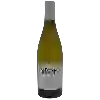
Winery BayonetteRed
In the mouth this red wine is a powerful with a nice balance between acidity and tannins.
This wine generally goes well with beef, veal or pasta.
The Red of the Winery Bayonette is in the top 10 of wines of Côtes du Roussillon Villages.
Taste structure of the Red from the Winery Bayonette
Light | Bold | |
Smooth | Tannic | |
Dry | Sweet | |
Soft | Acidic |
In the mouth the Red of Winery Bayonette in the region of Languedoc-Roussillon is a powerful with a nice balance between acidity and tannins.
Wine flavors and olphactive analysis
On the nose the Red of Winery Bayonette in the region of Languedoc-Roussillon often reveals types of flavors of cherry, oaky or tobacco and sometimes also flavors of plum, leather or raspberry.
Food and wine pairings with Red
Pairings that work perfectly with Red
Original food and wine pairings with Red
The Red of Winery Bayonette matches generally quite well with dishes of beef, pasta or veal such as recipes of beef tongue with vegetables, lasagna bolognese express or veal tagine with prunes.
Details and technical informations about Winery Bayonette's Red.
Discover the grape variety: Grec rouge
Most likely from the south of France, it is now an endangered variety.
Last vintages of this wine
The best vintages of Red from Winery Bayonette are 2013, 2011, 2012
Informations about the Winery Bayonette
The Winery Bayonette is one of of the world's greatest estates. It offers 1 wines for sale in the of Côtes du Roussillon Villages to come and discover on site or to buy online.
The wine region of Côtes du Roussillon Villages
The wine region of Côtes du Roussillon Villages is located in the region of Côtes du Roussillon of Languedoc-Roussillon of France. Wineries and vineyards like the Domaine du Clos des Fées or the Domaine de Rombeau produce mainly wines red, white and pink. The most planted grape varieties in the region of Côtes du Roussillon Villages are Mourvèdre, Lledoner pelut and Pinot noir, they are then used in wines in blends or as a single variety. On the nose of Côtes du Roussillon Villages often reveals types of flavors of cherry, anise or black plum and sometimes also flavors of citrus fruit, tree fruit or fennel.
The wine region of Languedoc-Roussillon
Languedoc (formerly Coteaux du Languedoc) is a key appellation used in the Languedoc-Roussillon wine region of southern France. It covers Dry table wines of all three colors (red, white and rosé) from the entire region, but leaves Sweet and Sparkling wines to other more specialized appellations. About 75% of all Languedoc wines are red, with the remaining 25% split roughly down the middle between whites and rosés. The appellation covers most of the Languedoc region and almost a third of all the vineyards in France.
The word of the wine: Trading
Term used to designate the wine trade and related professions. Sometimes used in contrast to viticulture.









